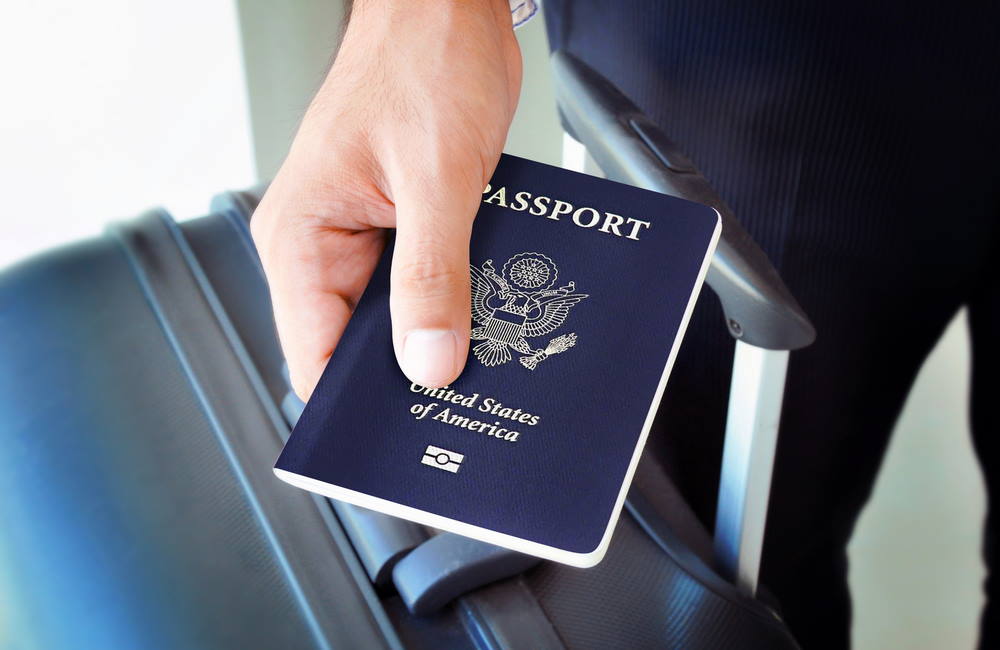
Services
Flying Angels provides medical transport services worldwide. Learn how commercial airline flight nurses can support you & your family.

Flying Angels provides medical transport services worldwide. Learn how commercial airline flight nurses can support you & your family.


Air travel provides the fastest and safest way for people to make a long journey, but those with disabilities face obstacles when dealing with crowded airports, cramped airplane seating and security lines. However, air travelers with developmental disabilities can travel by air if they make the proper plans and follow smart precautions.
Air travelers with developmental disabilities have the ability to fly under provisions of the Air Carrier Access Act (ACAA), enforced by the U.S. Department of Transportation. The ACAA makes it illegal for airlines to discriminate against passengers because of a disability. The law applies to flights to, from, or within the United States.
Flight nurses who work with non-emergency medical transport (NEMT) companies can help air travelers with developmental disabilities make long journeys by coordinating the trip and providing medical care during the flight.
The ACAA mandates that airlines provide air travelers with developmental disabilities certain types of assistance. They offer online videos and information to airline employees on the details of these services. For those with disabilities who plan to travel, it’s helpful to read and watch the material to get a better understanding of the support they have when traveling.
The areas of assistance include:
Some of the areas where a NEMT flight nurse can benefit a traveler with disabilities is helping them overcome these common challenges.
Flight schedules also can cause issues, especially making a connection with little time available. A highly valued service for air travelers with developmental disabilities comes from RN flight coordinators who handle every aspect of travel plans, including working with airports and airlines for any needed special accommodations.
Those accommodations include special seating considerations and letting the airlines know about any medical equipment they plan to bring onboard. During the trip, flight nurses manage all the traveler’s medications and equipment. They also are specifically trained to provide any needed medical treatment at high altitudes.
Air travelers with developmental disabilities can still enjoy travel by planning ahead. They also can benefit from getting support during their journey from experienced NEMT flight nurses and RN flight coordinators.

Illness and injury are difficult to navigate while travelling internationally. Medical repatriation services with a flight nurse can help.


It’s possible to fly with a traumatic spinal cord injury. However, doing so requires careful planning, consultation with a doctor, and knowing the rights of disables travelers. Traveling with a flight nurse can also provide peace of mind that all travel and medical needs are met.
If planned properly, flying with a traumatic spinal cord injury (SCI) is safe and enjoyable. It also can boost the mental health of an injured person who reaps the benefits of seeing new places and helps them realize that life does go on, even after a catastrophic injury.
Before making the decision to fly, it’s important for those with an SCI to understand the proper steps to take to avoid common mistakes and pitfalls of traveling with an injury. Just like when people fly after a traumatic brain injury, preparation is key in flying with SCI.
Can You Fly With a Traumatic Brain Injury?
Traumatic spinal cord injury, typically abbreviated as SCI, involves damage to any part of the spinal cord or the nerves at the end of the spinal canal. An SCI can cause changes in sensation, strength and other body functions below the site of the injury. These changes may be permanent or temporary depending on the extent of the damage.
Common causes of SCI include car accidents, falls, injuries during sports or recreation activities, and diseases such as cancer, arthritis, osteoporosis and inflammation of the spinal cord.
Those who experience SCI will feel the impact not only in their physical health, but also emotionally and socially. Every year, scientists make more progress toward one day finding a way to repair spinal cord injuries. However, as reported by the Mayo Clinic, “In the meantime, treatments and rehabilitation allow many people with spinal cord injuries to lead productive, independent lives.”
For those who feel like they are able, travel also becomes an option.
Those who feel they are ready to fly with a traumatic spinal cord injury should keep the following in mind.
Now is not the time for spontaneity. It’s important to speak with your physician before making any travel plans. They can provide guidance on what you can and cannot do. Remember that each spinal cord injury is different, and every person’s body reacts in its own way to the specific type of SCI. You need to speak with your own physician about your own condition rather than rely around stories from others.
If you travel domestically, the Americans With Disabilities Act provides details on all the rights of disabled travelers, which include the right to travel freely and not face discrimination and harassment of any kind. You also are guaranteed help with wheelchairs and other assistance devices, as well as special seating accommodations on the plane. All buildings also must provide access to those with disabilities.
Getting medical clearance and knowing your rights are just the first steps. Next, you will want to create a travel plan that considers all the important issues. It may seem overwhelming at first, but it’s worth it to think ahead on certain issues. Issues to cover with a travel checklist include the following.
8 Air Travel Facts You Didn't Know About
It’s important to consider all the little things at home that can turn into an ordeal while traveling, such as paying a visit to a small airplane bathroom. Make sure to think ahead for anything you might need or situations you want to avoid. Also, make sure all the equipment you are carrying is in good working order and that you have a backup plan in case something breaks, such as your wheelchair.
Given all the situations and issues that people who fly with SCI must deal with, many decide to hire a professional flight nurse to make the flight with them. Flight nurses who specialize in non-emergency medical transport can handle many of the issues listed above, as well as booking your travel and making any needed special arrangements in advance. They also keep track of all medications and have training and experience in providing medical care at high altitudes and managing medical emergencies.
Enduring a spinal cord injury should not keep those who are physically able from enjoying their lives, including travel. With the proper planning and consultation with medical professionals, flying with a traumatic spinal cord injury is doable and gives you the chance for a well-earned break from the daily routine.

People can, and often do, fly with COPD (chronic obstructive pulmonary disease). They should first consult with a doctor, understand the risk, bring with them any necessary medical equipment and consider traveling with a flight nurse.
About 2 billion people travel each year by airplane, with between 18% and 44% having COPD, according to a study from the British Journal of General Practice. For most passengers, even those with COPD and other respiratory diseases, air travel is safe and comfortable.
Of course, there are rules to follow when you decide to fly with COPD, just as there are if you fly after a stroke or fly after a heart attack. The first step is understanding the risks.
Can You Fly After a Heart Attack?
COPD is a chronic lung disease. It causes obstructed airflow from the lungs, resulting in symptoms that include breathing difficulty, cough, mucus production and wheezing, according to the Mayo Clinic.
Cigarette smoking is one of the leading causes of COPD, although it can happen with long-term exposure to any type of “irritating gases or particulate matter,” according to the clinic. For those with COPD, the risk is higher that they will eventually develop heart disease, lung cancer and other conditions.
By 2030, health officials think COPD will become the fourth leading cause of death around the world.
In the context of flying, those with COPD can experience issues breathing at high altitudes as the air pressure drops. Most people compensate for this by increasing ventilation, something those with COPD may experience difficulty doing, depending on the severity of the illness.
There are certain steps to take before flying with COPD. They include the following, according to the Cleveland Clinic.
Past studies have shown that only a small percentage of patients even consult with a doctor before they fly with COPD, which is getting off on the wrong foot. Even if it’s an appointment over the phone, give yourself time in advance to speak with your doctor and get their opinion on your flying. This is especially important if you have been in the hospital lately.
Get Help Leaving the Hospital After Discharge
You need to have access to oxygen in case you experience breathing difficulties. Passengers are not allowed to bring oxygen tanks on an airplane. While some international carriers can provide tanked oxygen, you must use a portable oxygen concentrator (POC) for domestic travel. If you do not own a POC, you can rent one from companies such as Advanced Aeromedical. You will want to find out well in advance when notifying the airline about your flight and the paperwork the airline requires. Ensure you bring both your prescription for the oxygen and the airline forms signed by your healthcare provider when you travel.
Flying with Oxygen & Medications
Make sure to take enough medication for your entire trip and pack it all in your carry-on baggage. You’ll also want to carry a list of all your medications and the contact numbers for your doctor, respiratory therapist, and oxygen supplier, in case of emergencies.
Other tips to remember:
International Travel Checklist
You may also choose to use a non-emergency medical transport (NEMT) company like Flying Angels to provide medical transportation assistance if you choose to fly with COPD. Flight nurses, experienced in providing medical care at high altitudes, can take many of the worries out of flying with COPD.
Flying Angels also handle all the flight arrangements for you and your loved ones, another way of lowering the stress on those trying to fly with COPD or other chronic medical conditions. If you choose to fly with COPD, these tips can make your trip go more smoothly. Having COPD does not mean you cannot fly. It only means you must plan to ensure a safe flight to your destination.